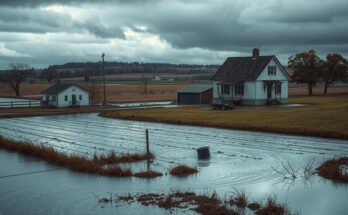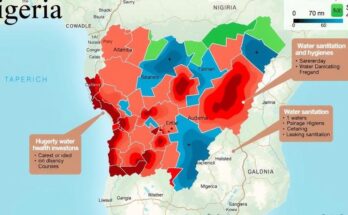Extreme weather is creating crises in agriculture globally, causing significant crop losses in many regions. A recent study indicated a sharp rise in such events, exacerbated by climate change, posing urgent challenges to food production systems. Experts emphasize the need for transformative adaptation strategies to build resilience, particularly for small-scale farmers who often lack resources to cope with these changes.
Extreme weather is increasingly destroying crops globally, impacting diverse regions from Tanzania’s corn fields ruined by floods to the heat-induced loss of coffee in Vietnam and the decline of Kampot pepper in Cambodia. Carbon Brief has compiled a comprehensive map highlighting 100 instances of crops damaged by various extreme weather events during 2023-2024, drawing from multiple media reports and data sources, including the UN Food and Agriculture Organization. Some geographical gaps were noted due to the focus on English-language reports.
The Intergovernmental Panel on Climate Change (IPCC) asserts that sudden food production losses from extreme weather have risen steadily since the mid-20th century, with predictions indicating that climate change may render some current agricultural areas unviable. Experts warn that repeated climate extremes will significantly disrupt global agriculture, creating not only immediate but also enduring effects on crop yields and harvests.
Specific incidents illustrate these challenges, such as a severe typhoon in the Philippines in 2012 that led to substantial banana crop losses. Dr. Monica Ortiz, an environmental scientist, notes that recovery took the industry five years after that event. In Nepal, agricultural shifts are necessary due to changing conditions, as expressed by Ananta Prakash Subedi, who highlights the adverse effects on mandarin oranges due to increasing diseases and pests.
Professor Andy Challinor emphasizes the interconnected risks posed by climate change and other factors like trade disruptions. He suggests that resilience within food systems is critical to address these emerging threats. The complexities of these interactions remain unpredictable, but the frequency and severity of disruptions are on the rise.
Carbon Brief’s research identified numerous crops affected by extreme weather, showcasing the unpredictability of climate impacts. Human-induced climate change exacerbates these extremes, making them more frequent and intense. Specific studies, like those from World Weather Attribution (WWA), illustrate how climate change has intensified weather events, as seen in Brazil’s floods, which destroyed soybean crops and resulted in significant human displacement.
El Niño conditions have further complicated agricultural issues, as evidenced by the 2024 drought in southern Africa, which devastated Zimbabwe’s maize production. Latin America also experienced severe impacts, including wildfires affecting vineyards in Chile and droughts reducing crop yields in Argentina.
While the focus of Carbon Brief remains on crop agriculture, livestock has also been severely impacted. Reports indicate that Mongolia lost over seven million animals during a harsh dzud winter event in early 2024, threatening livelihoods and leading to rural migration. Similarly, rising temperatures in Singapore negatively impacted milk production.
The changing climate fosters the spread of pests and diseases that threaten crops, although some crops may benefit from warmer conditions. There are also possibilities for new crop types to thrive in regions previously unsuitable for them due to rising temperatures. Yet, the IPCC report warns that a two-degree Celsius increase could lead to severe food production challenges, with significant impacts on both agricultural workers and livestock.
The IPCC highlights that adaptation strategies, such as sustainable practices and integrating local knowledge, are essential to mitigate climate impacts on agriculture. However, insufficient financial resources impede the implementation of these adaptations, necessitating increased public and private investment. Farmers often rely on emergency solutions like crop insurance, which is becoming more expensive and harder to obtain due to climate change.
Research points toward innovative solutions such as drought-resistant crops, underscoring the importance of aligning technological advancements with the realities of local agriculture and its environmental context. The need for effective adaptation strategies remains urgent as farmers struggle to cope with worsening weather conditions and economic pressures.
In summary, extreme weather events are increasingly detrimental to global crop production, as evidenced by significant losses reported in various regions. Climate change amplifies these challenges, leading to unpredicted agricultural volatility and necessitating substantial adaptation efforts. Experts advocate for increased investment and transformative strategies to enhance resilience in food systems, particularly for vulnerable small-scale farmers who face significant barriers to adaptation.
Original Source: interactive.carbonbrief.org




